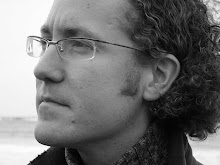I was contacted at the start of July by a Gustav Kuhn from
Unfortunately, Gustav’s eyelink II system was not setup yet so he asked if he could run his study using the equipment we have here. I agreed with three small provisos:
1) the study had to take place after the 11th July as I was at a project meeting in
2) I would have to run some of my own stimuli on the subjects whilst they were being eyetracked;
3) the study had to be finished by the 14th July as I had to fly to
In the course of 3 days I managed to prepare two sets of stimuli for my part of the study, design and implement the experiment using the Experiment Builder software which I had never used before, test, pilot, and run 13 subjects through the experiment, and process the data so that Gustav could do his analysis. Phew! Gustav was up in
Unfortunately, the pace for my part of the experiment has slowed down somewhat. I tested two types of stimuli. The first were the videos I used in the editing memory experiment. I wanted to see which details of the videos viewers were using to detect the editing discontinuities. I also had some hypotheses about how the discontinuities would effect their eye movements (see d'Ydewalle, G., Desmet, G., & Van Rensbergen, J., 1998 for similar effects). To extract these effects I need to examine each video by hand and then perform some complex statistics on the eye movement data. Sadly this can not be done in a day L I’ll publish these results in the Editing Memory sometime soon.
The second stimuli I eyetracked were feature films. I have been desperate to get eyetracking data for films with different degrees of continuity for ages and Gustav’s urgency finally motivated me to do it. In my thesis I develop a series of hypotheses about how eye movements should be controlled by an editor in order to create the perception of continuity. This data should provide direct evidence of these techniques (if they exist) and motivate further, in depth studies. The films I eyetracked are also interesting to film theorists as they cover the most significant styles of films: Blade Runner (Continuity), Citizen Kane (Deep Focus), Koyaaniqsatsi (Non-narrative), Dancer in the dark (Dogme-esque), Eisenstein’s October (Dialectical Montage), Hulk (Digital Composition/Collage), Requiem for a Dream (Quick Cutting/MTV style), and a few more.
I’m really excited about the findings of this study and I’ll keep this blog updated as to what I find. Unfortunately, analysis of eyetracking data for long sequences of feature films is not easy and there exists no tools to assist. I’m currently developing my own methodologies, tools, and analyses to make this possible. Fingers crossed everything goes to plan and I have some interesting results to present asap.
So in conclusion, high speed experimentation is by far the most Rock ‘n’ Roll way to run experiments. Unfortunately, there is nothing Rock ‘n’ Roll about analysis. (Any suggestions on how I can make my analysis “rock” are highly appreciated)




1 comment:
Greetings,
Just stumbled across your blog via a search for something. I believe we've met, or at least gazed across a room at each other. I've just started writing a blog. I'm hoping to get tips from yours on how it can be used to help me in my research! Anyway, just thought I'd say "hi".
Andy
Post a Comment